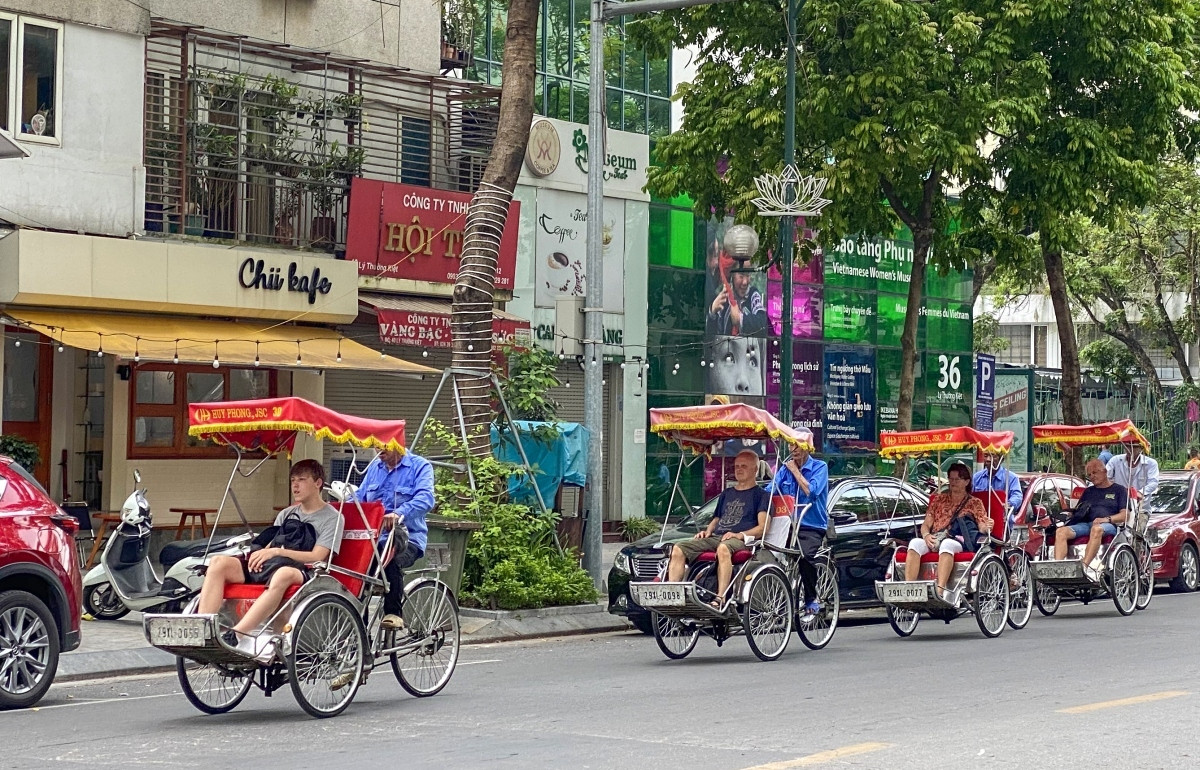
As many as 5.6 million foreign travelers chose to visit Vietnam in the first half of this year, an impressive figure that has met nearly 70% of the target set for the entire year. However, as in previous years, their spending has so far not lived up to the industry’s expectations.
Statistics unveiled by the Vietnam National Authority of Tourism indicates that Vietnam welcomed approximately 18 million foreign arrivals in 2019, which was considered the golden time for the tourism industry. A foreign traveler at that time spent US$1,074 on a holiday lasting 8.1 days on average, equivalent to US$132.6 per day. Visitors from faraway markets such as Russia, the UK, the United States, Australia, and France recorded higher travel spending due to longer stays.
Meanwhile, Thailand in the same year received 40 million foreign arrivals, with visitor spending doubling at between US$2,400 to US$2,500.
To attract the return of foreign visitors in the post-pandemic period, Thailand has decided to increase the length of stay for visitors by another 15 days. According to calculations made by the Tourism Authority of Thailand, if each tourist stays for five days more and spends an average of 4,000 to 5,000 baht, the economy will get about 20,000 baht more from each trip of each visitor.
Under the motto of ‘Customer First’, visitors to Thailand have plenty of activities to enjoy from morning until night and are always willing to pay for services, from food, sightseeing, and shopping, to healthcare and spa services. There, visitors can easily find items which are tailored to their needs priced from just a few dozen baht to branded goods that cost hundreds of millions of baht.
Before the COVID-19 pandemic broke out, tourism revenue accounted for 12% of Thailand’s GDP, and visitor payout rates ranged from US$2,400 US$2,500 per day, with an average duration of about nine days. This year, the Thai tourism industry aims to attract roughly 25 million international visitors and earn about US$68 billion from services. It remains one of the main industries contributing to the country’s growth amid the export of goods and services encountering difficulties.
Visitor spending needs a change in Vietnam
Recently, the National Assembly of Vietnam approved legislation which allows foreigners to extend their e-visas validity to 90 days, as opposed to the current period of 30 days. During their approved duration, foreigners will be able to enter and exit the nation multiple times, without having to go through new visa procedures. The visa extension, which is scheduled to take effect as of August 15, is expected to help international visitors stay longer and spend more in Vietnam.
Einar, a tourist from Norway, told Vietnam Television that he had planned to visit the country for a month, but he was considering a longer stay thanks to the introduction of the new visa policy.
“I will probably spend two months here, and of course I will have to spend more. Normally I spend between US$20 to US$50 a day,” he said.
In order to attract and retain foreign visitors to stay longer, travel businesses have created new tours, such as extending the tour for another week or designing products tailored to visitors’ needs, in an attempt to double the spending level compared to previously.
“Visitors with special requirements normally double their payment compared to the traditional tour. It is calculated that revenue from services for international visitors to Vietnam will likely increase by about 20%,” confided Le Hong Thai, director of Hanoitourist.
Meanwhile, Phan Chuong Vu, chief executive officer of Discova Vietnam, suggested that visitors should be able to enjoy new experiences during the course of their tour.
“After a three-week long tour, they may have one more week of vacation at a certain resort. Hopefully with this new visa policy, visitors will stay longer, and revenue will also increase correspondingly," said Vu.
Moving forward into the second half of the year, the tourism industry needs to receive about 2.4 million international visitors to meet the yearly target. It is not a difficult task, and the industry may even beat the 10 million visitor mark by the end of the year. In addition to State policies, businesses are required to improve service quality and learn about tourism development strategies of strong regional rivals such as Thailand, Malaysia, and Singapore.
With the new visa policy to be put in place, businesses seek to encourage visitors to boost their spending, especially during the peak tourism season later this year. Statistics highlight that accommodation and catering services make up 56% to 60% of visitor spending, while goods, souvenirs, sightseeing, entertainment, and entertainment services account for only 20%, along with other expenses.
In neighbouring countries such as Malaysia and Thailand, entertainment activities represent 40% to 50%, even up to 60% to 70% of the total spending for a trip. It’s now time to change this spending structure.
Source: VOV